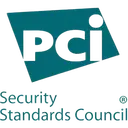Oro provides content designed to educate and help audiences on their compliance journey.
In the ever-changing landscape of cybersecurity threats, how can businesses stay one step ahead of potential risks and protect their valuable data? Enter continuous security management (CSM)—a proactive approach to cyber and information security that ensures a robust security posture by monitoring, detecting, and responding to security threats in real time.
In this post, we delve into the role of CSM, its critical constituents, and its advantages for contemporary businesses in tackling evolving cyber threats and cloud security challenges.
Key takeaways
- Continuous security management is a proactive approach to monitoring cybersecurity in real time
- CSM helps protect against cyber threats and cloud security issues
- It involves real-time monitoring, automated remediation & compliance management
Understanding continuous security management (CSM)
In today’s digital era, businesses face a multitude of security risks. With data breaches and cyberattacks becoming increasingly common, organizations need to be on their toes to protect their assets. CSM is a relevant security practice. It provides the capability to monitor the security status of an organization in real time and detect potential security threats. By identifying potential risks early and taking steps to reduce them, CSM helps organizations lower their security risk and improve their security posture.
However, implementing CSM is not without challenges. Some of the challenges include:
- A staggering 81% of data breaches slip past traditional security controls due to weak or stolen passwords, according to a report by Verizon’s 2020 Data Breach Investigations Report (DBIR).
- To be effective, CSM requires real-time visibility into IT security data
- CSM also requires a way to classify data
- A defined action protocol is necessary for the successful implementation of CSM
The role of CSM
CSM equips organizations with automated tools and processes to pinpoint and handle data security risks through constant security data surveillance.
Not only does CSM keep systems and networks safe, but it also provides ongoing monitoring and analysis of security data, along with automated tools and processes to manage risk effectively.
This proactive approach to cybersecurity ensures that organizations can stay ahead of threats and minimize the potential damage caused by security incidents.
Three key components of CSM
The key components of continuous cybersecurity monitoring include:
- Real-time monitoring
- Automated remediation
- Compliance management
1. Real-time monitoring
Real time monitoring enables organizations to continuously monitor their security posture and quickly identify any potential risks, such as forgotten identities or ones with excessive permissions. By implementing continuous security monitoring, organizations can further enhance their security measures, making continuous security monitoring important.
2. Automated remediation
Automated remediation is another essential component of CSM. It ensures that any security issues are addressed promptly, allowing security teams to return to normal operations as quickly as possible. By amalgamating these core components, CSM offers an all-encompassing and anticipatory strategy for managing security risks and upholding a robust security posture.
3. Compliance management
Compliance management involves ensuring that the organization’s security measures are in line with the required standards and regulations. This could range from industry-specific regulations, such as HIPAA for healthcare and PCI DSS for payment card information, to general data protection regulations, such as GDPR.
In the context of CSM, compliance management means continuously monitoring and auditing the organization’s security controls and processes to ensure they meet these regulatory standards. This not only helps in avoiding potential fines and legal issues but also builds trust with customers and stakeholders by demonstrating the organization’s commitment to data security.
Moreover, compliance management in CSM also involves updating the organization’s security measures as regulations evolve, ensuring that the organization remains compliant even as standards change. This proactive approach to compliance helps organizations stay ahead of potential risks and protect their valuable data.

Recommended reading
Your guide to compliance risk management
Understanding how to manage your risk as a business is an important element of getting and staying compliant with widely accepted information security frameworks.
The need for CSM in modern businesses
Implementing CSM allows organizations to keep a constant eye on their security posture, identify potential risks, and mitigate them before they inflict substantial damage. Subsequent sections will discuss how CSM can aid businesses in confronting the challenges presented by evolving cyber threats and cloud security issues.
Cyber threats are ever-evolving
Businesses must stay on top of potential ever-evolving security threats and adapt their security strategies accordingly. One potential security threat that organizations face, among others, includes data breaches. Some other potential security threats are:
- Mobile attacks
- Phishing scams
- Ransomware
- Sophisticated malware or hacking-based attacks
CSM helps businesses stay ahead of these emerging threats, providing them with the tools and processes needed to keep up with the ever-changing threat landscape. The risks of evolving cyber threats include:
- Data loss
- Financial loss
- Damage to reputation
- Disruption of operations
To manage these risks, businesses must apply continuous security management, a process that includes establishing a secure foundation, incorporating automation, and scrutinizing features and functionality. This approach is essential for effective risk management.
Cloud security challenges
Cloud security challenges that pose significant threats to businesses include:
- Data breaches
- Regulatory mandates
- Lack of IT expertise
- Cloud migration issues
- Misconfigurations and poor change control
- Absence of a cloud security architecture or strategy
- Shadow IT
- Identity and access management
- Cloud compliance
CSM offers a solution to these challenges by addressing misconfigurations and excessive permissions, which are common issues in cloud environments. This proactive approach to cloud security enables businesses to maintain a strong organization’s security posture, even as the complexity of cloud environments continues to grow.
Identifying and addressing security risks with CSM
CSM helps organizations by:
- Identifying and addressing security risks, such as privilege escalation and workload vulnerabilities
- Monitoring permissions and detecting potential risks
- Enabling organizations to prevent unauthorized access and protect their sensitive data
Preventing privilege escalation
Privilege escalation occurs when an attacker exploits a bug, design flaw, or configuration oversight in an operating system or software application to gain access and higher privileges than they are supposed to have (e.g., moving from a normal user to an administrator, to a super-administrator.)
CSM plays an instrumental role in averting privilege escalation by constantly overseeing permissions and notifying organizations when an individual has excessive access rights. By keeping a close eye on permissions and access controls, CSM helps organizations minimize the risk of compromised identities and privilege escalation, ensuring a secure environment for their valuable data.
Securing workloads
Workloads, which encompass any program or application that runs on a computer, can be vulnerable to security threats if not properly protected. CSM helps secure workloads by detecting vulnerabilities and ensuring that proper access controls are in place.
By continuously monitoring workloads and addressing potential security issues, continuous security monitoring CSM enables organizations to maintain a secure environment and protect their critical information assets from unauthorized access.
Best practices for implementing CSM
Implementing CSM effectively requires a strategic approach that involves establishing a secure baseline, integrating automation, and evaluating features and functionality.
1. Establishing a secure baseline
A secure baseline is a set of predefined security configurations, settings, and controls that are established as the starting point for an organization’s IT systems, applications, networks, and other digital assets. These baselines are designed to provide a foundation of security measures that aim to mitigate common security vulnerabilities and risks.
By establishing a secure baseline, organizations can detect misconfigurations and ensure consistent security standards across the organization. This helps in several ways:
- Consistency: By applying the same security settings and configurations across all systems and applications, you reduce the chances of inconsistencies that could lead to security gaps.
- Reduced attack surface: A secure baseline typically includes disabling unnecessary services, ports, and features that might be potential entry points for attackers. This reduces the overall attack surface.
- Risk mitigation: By applying security best practices and configurations, you address known vulnerabilities and reduce the risk of successful attacks.
- Regulatory compliance: Secure baselines often incorporate configurations required by industry regulations and standards, making it easier to demonstrate compliance.
- Efficient management: Having a baseline simplifies security management by providing a known starting point for monitoring, assessing, and updating security measures.
- Rapid deployment: When new systems or applications are deployed, having a secure baseline can expedite the process by starting with a predefined secure configuration.
- Automation: Many security tasks can be automated based on the secure baseline, such as vulnerability assessments and configuration checks.
However, it’s important to note that a secure baseline is not a one-size-fits-all solution. Different organizations and systems may have varying requirements based on their unique risk profiles, industry regulations, and business needs. Therefore, while a baseline provides a solid foundation, it should be tailored and updated as needed to suit the organization’s specific security goals.
2. Incorporating automation into your CSM strategy
Automation is the use of technology to perform tasks with minimal human input. In the context of CSM, integrating automation helps simplify remediation processes and enables organizations to stay on top of:
- Vulnerability management: Automation tools can scan systems, applications, and networks for known vulnerabilities regularly. They can identify missing patches, misconfigurations, and other security weaknesses and provide prioritized lists for remediation.
- Patch management: Automated systems can assess the need for patches and updates, test them in a controlled environment, and deploy them across a network of devices without manual intervention. This reduces the time between patch release and implementation, minimizing the window of vulnerability.
- Threat detection and monitoring: Automation helps monitor network traffic, logs, and behavior patterns in real time to detect unusual or malicious activities. Automated threat detection can trigger alerts or even take predefined actions in response to specific events.
- Incident response: Automation can assist in incident response by immediately triggering predefined actions when specific security incidents are detected. For example, isolating a compromised system from the network, blocking malicious IPs, or initiating a playbook for incident investigation and mitigation.
- User and access management: Automation can streamline user provisioning and de-provisioning processes, ensuring that employees have the appropriate access privileges and that their access is revoked when they no longer need it.
- Configuration management: Automated configuration management tools help maintain consistent and secure configurations across systems and applications. They can revert changes to a secure state automatically and notify administrators of any deviations.
- Security orchestration: Automation tools can orchestrate complex security processes involving multiple systems and tools. This ensures that various security tools and processes work together seamlessly.
- Compliance and auditing: Automation can assist in maintaining compliance with industry regulations and standards by continuously monitoring configurations, policies, and actions, and generating compliance reports.
- Penetration testing: Automated penetration testing tools can simulate attacks on systems to identify vulnerabilities and weaknesses. These tools provide insights into potential security gaps without manual intervention.
- Reporting and analysis: Automation can aggregate data from various security tools, generate reports, and provide insights into security posture and trends, helping security teams make informed decisions.
- Policy enforcement: Automated systems can enforce security policies by blocking or alerting when certain actions or behaviors violate established security guidelines.
By incorporating automation into their CSM strategy, organizations can streamline their security management processes and ensure a swift response to any potential threats. This proactive approach to cybersecurity helps maintain a robust security posture in the face of evolving cyber threats and cloud security challenges.
Crucial factors to consider when choosing a CSM solution for your organization
Choosing the right CSM solution for your organization involves considering key factors, such as features and functionality, as well as cost and return on investment (ROI). By carefully evaluating these factors, organizations can select a CSM solution that meets their unique security needs and budget requirements.
Evaluating features and functionality
When selecting a CSM solution, it’s important to evaluate its features and functionality to determine whether it aligns with your organization’s needs and provides appropriate security measures. Key features to consider include:
- Identity management
- Data protection
- Compliance management
- User access control
- Threat detection and response
- Automated patching
By selecting a CSM solution with comprehensive features, organizations can effectively protect their valuable data, maintain a strong security posture, and stay ahead of potential security threats and vulnerabilities.
Assessing cost and ROI
In weighing the cost and potential ROI of a CSM solution, organizations should take into account:
- The cost of implementation
- Ongoing maintenance costs
- Prospective return on investment / potential cost of *not* having a CSM solution
It’s important to assess these factors to ensure that the chosen CSM solution fits within the organization’s budget and meets its security requirements.
By carefully considering the cost and potential ROI of a CSM solution, organizations can make an informed decision and select a solution that provides the optimal balance of cost, features, and functionality.
Future-proof your business with a confident solution
Whether you’re ensuring that you have continuous monitoring to keep risk at bay or are exploring additional frameworks to open up new markets, it’s never too late to take another look at your compliance program. Learn more here or schedule a time to talk to an expert.
More FAQs about continuous security management
What is the meaning of continuous security?
Continuous security is a comprehensive approach to security management that involves automating security monitoring, including vulnerability detection, cloud configurations, identities and entitlements, and data security. It aims to maintain a constant watch over the security of your system and protect against any potential risks or threats.
What are the 3 strategies for security management?
The three strategies for security management are information security management, network security management, and cybersecurity management, which combined provide a layered approach to protect business assets from potential threats.
What is continuous monitoring in security?
Continuous monitoring in security is an approach that automates the constant monitoring of information security controls, vulnerabilities, and other cyber threats to detect potential problems and threats in real time. It provides organizations with the ability to identify and address any issues quickly.
Why is CSM important for modern businesses?
By utilizing CSM, businesses can stay on top of the latest security threats and cloud challenges, ensuring their data is kept safe and secure. With CSM, businesses can be proactive in their security measures rather than reactive. They can identify potential threats before they become a problem and take steps to mitigate them.
What are the key components of CSM?
CSM is an effective tool with three key components: real-time monitoring, automated remediation, and compliance management. Real-time monitoring allows organizations to detect and respond to security threats quickly. Automated remediation helps organizations quickly address security issues and reduce the risk of a breach.

Related Posts
Stay connected
Subscribe to receive new blog articles and updates from Thoropass in your inbox.
Want to join our team?
Help Thoropass ensure that compliance never gets in the way of innovation.













.png)